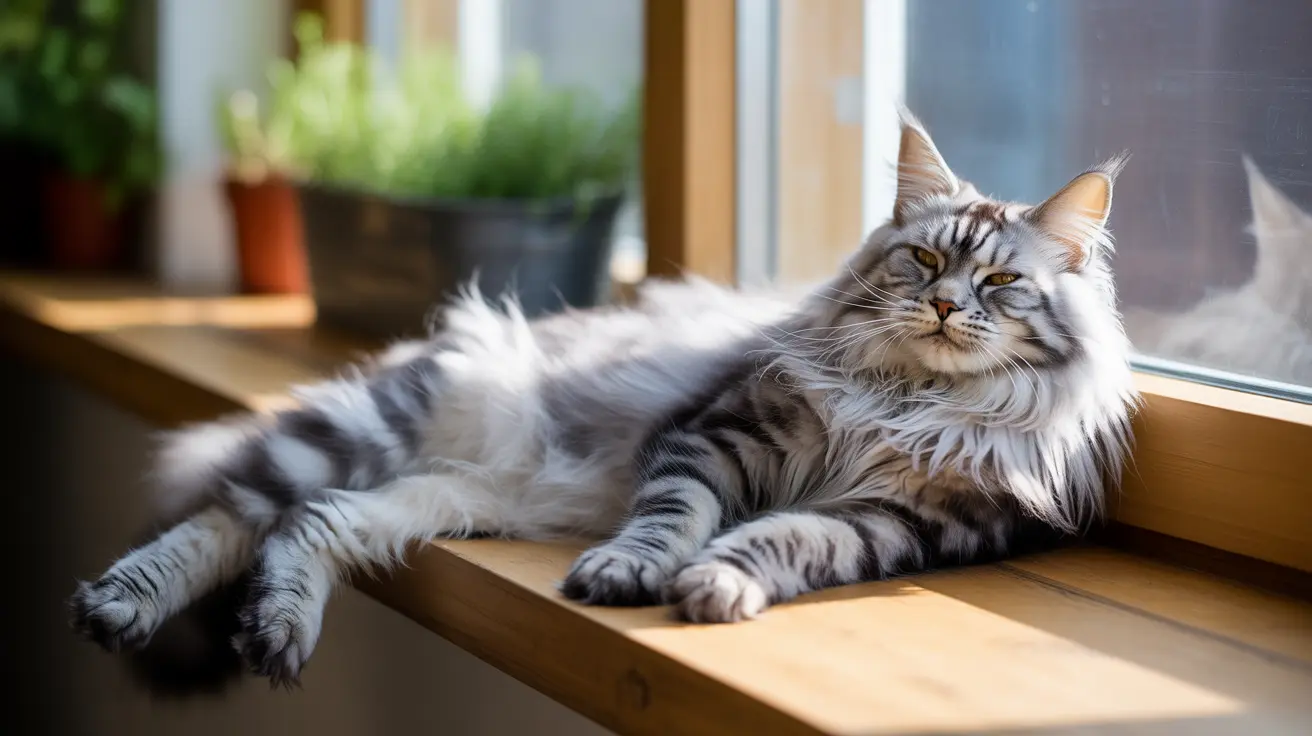How to Spot and Treat Fleas on Cats: A Complete Guide for Cat Parents
Discovering fleas on your beloved feline can be both frustrating and concerning. These tiny, blood-sucking parasites are more than just a nuisance—they can cause serious health problems for your cat and even affect your family. Understanding how to spot and treat fleas on cats effectively is crucial for maintaining your pet's health and comfort while protecting your entire household from infestation.
Fleas are remarkably resilient external parasites that affect cats, dogs, and other animals worldwide. The most common species found on cats is Ctenocephalides felis, though there are over 2,200 different flea species globally. These tiny, flat-bodied brown or reddish insects survive by feeding exclusively on blood, and they can cause significant skin inflammation, itchiness, and allergic reactions in cats. What makes fleas particularly challenging is their rapid reproduction rate—female fleas can lay up to 50 eggs per day, and their life cycle can complete in as little as two weeks under ideal conditions.
Whether you're a new cat owner or an experienced pet parent, this comprehensive guide will equip you with the knowledge needed to identify flea infestations early, implement effective treatment strategies, and prevent future outbreaks. From understanding the telltale signs of fleas to choosing the right treatment options for your cat's specific needs, we'll cover everything you need to know about winning the battle against these persistent parasites.
Identifying Fleas on Your Cat: Key Warning Signs
Early detection is crucial when learning how to spot and treat fleas on cats effectively. Fleas are tiny parasites—they can jump up to 13 inches, nearly 200 times their body length—making them difficult to spot with the naked eye. However, several distinctive signs can alert you to their presence before the infestation becomes severe.
The most obvious indicator is excessive scratching and grooming behavior. Cats with fleas will scratch intensely, often focusing on areas like the base of the tail, neck, and behind the ears. This constant scratching can lead to hair loss, red bumps, scabs, and secondary skin infections. You may also notice your cat biting at their fur or skin more frequently than usual.
Spotting Flea Dirt: The Telltale Evidence
One of the most reliable signs of flea infestation is "flea dirt"—small, black pepper-like specks scattered throughout your cat's fur. This isn't actually dirt but rather flea feces consisting of digested blood. To confirm whether these dark specks are indeed flea dirt, place them on a damp white paper towel. If they turn reddish-brown, you've confirmed the presence of fleas.
Flea dirt is particularly visible on light-colored cats and tends to concentrate around the base of the tail, lower back, and belly area. Regular grooming with a fine-toothed flea comb can help you spot this evidence early, especially if you comb over a white sheet or towel to catch any falling debris.
Physical Signs and Flea Bites
Direct flea bites appear as small red spots or bumps on your cat's skin, often found in less-haired areas such as the belly, inner legs, and armpits. These bites can cause intense itching and may develop into larger, inflamed areas if your cat has flea allergy dermatitis. Some cats may also develop scabs, hot spots, or bacterial infections from excessive scratching.
In severe cases, you might actually see live fleas moving through your cat's fur. These appear as tiny, dark, fast-moving specks that quickly disappear when you try to catch them. Adult fleas prefer to stay close to their host for regular blood meals, so they're most likely to be spotted during thorough grooming sessions.
Understanding the Flea Life Cycle: Why Multiple Treatments Are Necessary
Successfully learning how to spot and treat fleas on cats requires understanding their complex life cycle, which explains why single treatments often fail and why persistence is key to elimination. Fleas undergo complete metamorphosis with four distinct stages: egg, larva, pupa, and adult.
The cycle begins when adult fleas lay eggs on your cat—up to 50 eggs per day per female flea. These smooth, white eggs don't stick to fur and quickly fall off into your cat's environment: carpets, bedding, furniture cracks, and yard areas. This is why approximately 95% of flea eggs, larvae, and pupae reside in the environment rather than on your pet.
Environmental Development Stages
Flea eggs hatch into larvae within 1-12 days, depending on temperature and humidity conditions. These tiny, worm-like larvae feed on adult flea feces (flea dirt) and organic debris in their environment, developing over 5 to 11 days. The larvae then spin cocoons and enter the pupal stage, which can last anywhere from a few days to several months.
The pupal stage is particularly challenging because flea pupae can remain dormant in their cocoons for months, waiting for optimal conditions or host presence before emerging as adults. Vibrations, warmth, and carbon dioxide from potential hosts trigger emergence. This explains why fleas can suddenly appear in homes that have been vacant or why infestations can seem to return weeks after treatment.
Under ideal conditions (warm, humid environments), the entire life cycle can complete in just two weeks. However, in adverse conditions, it can extend up to a year. This variability means that effective flea control requires sustained treatment for several months to break the cycle completely and prevent reinfestation.
Choosing the Right Flea Treatment Products for Your Cat
When determining how to spot and treat fleas on cats, selecting appropriate treatment products is crucial for success. The market offers various options, from prescription medications to over-the-counter treatments, each with different mechanisms of action and safety profiles.
Prescription Flea Medications: The Gold Standard
Veterinary-prescribed flea treatments are generally the most effective options available. These include topical spot-on treatments applied to the neck area, oral tablets or chewables, and prescription flea collars. Many modern prescription products provide broad-spectrum protection against multiple parasites, including fleas, ticks, and intestinal worms.
Topical spot-on treatments are particularly popular because they're easy to apply and provide month-long protection. These products typically contain ingredients that kill adult fleas quickly while also preventing egg development. Oral medications work systemically, killing fleas when they bite your cat, and some formulations also include insect growth regulators (IGRs) that prevent immature fleas from developing into reproducing adults.
Over-the-Counter Options and Their Limitations
While prescription products are generally more effective, several over-the-counter options can provide relief, especially for mild infestations. Cat-safe flea shampoos can kill adult fleas on contact, though they don't provide residual protection. In emergency situations, unscented dish soap can serve as a temporary measure to kill adult fleas through suffocation.
Flea combs remain one of the most useful tools for both detection and removal. Regular combing with a fine-toothed flea comb can physically remove adult fleas and flea dirt while allowing you to monitor your cat's flea status. However, combing alone won't eliminate an established infestation since it only removes fleas currently on your cat, not those in the environment.
Important Safety Considerations
Always use products specifically intended for cats, as dog flea treatments can be toxic to felines. Products containing permethrin are particularly dangerous for cats and should be avoided entirely. Additionally, consult your veterinarian before using any flea treatment on kittens, pregnant cats, or cats with health conditions, as these animals may require special formulations or dosing adjustments.
Comprehensive Home Environment Treatment
Learning how to spot and treat fleas on cats isn't complete without addressing environmental treatment, since 95% of the flea population lives in your home environment rather than on your pet. Effective flea control requires simultaneous treatment of your cat and thorough cleaning of your living spaces.
Cleaning and Vacuuming Strategies
Thorough and frequent vacuuming is one of the most important steps in environmental flea control. Vacuum all carpets, rugs, upholstery, pet bedding areas, and floor cracks where flea eggs and larvae might hide. Pay special attention to areas where your cat spends the most time, as these locations will have the highest concentration of flea eggs.
The physical action of vacuuming removes flea eggs, larvae, and pupae while also stimulating flea emergence from cocoons, making them more susceptible to treatment products. After vacuuming, immediately dispose of vacuum bags or empty bagless containers, as fleas can continue developing inside. Some experts recommend placing a flea collar piece inside vacuum bags for added killing power.
Washing and Heat Treatment
Wash all pet bedding, your own bedding, and any washable fabrics in hot water (at least 140°F) followed by high-heat drying for at least 20 minutes. The combination of hot water and heat effectively kills all flea life stages. For items that can't be washed, such as pillows or delicate fabrics, placing them in the dryer on high heat for 30-40 minutes can achieve similar results.
Consider steam cleaning carpets and upholstery, as the high temperature and moisture can kill flea eggs and larvae in deep fibers. However, be aware that increased humidity from steam cleaning may also accelerate flea development in some areas, so combine this method with other treatment strategies.
Chemical Environmental Treatments
For severe infestations, environmental flea sprays containing both adulticides and insect growth regulators (IGRs) may be necessary. IGRs are particularly valuable because they disrupt flea development, preventing larvae from maturing into reproducing adults. These products should be applied according to label directions, focusing on areas where your cat rests and plays.
In cases of persistent outdoor infestations, treating your yard with appropriate flea control products may be necessary. Focus on shaded, moist areas where flea larvae are most likely to survive and develop. Professional exterminators may be needed for severe indoor or outdoor infestations that don't respond to standard treatment approaches.
Special Considerations for Different Cat Populations
Understanding how to spot and treat fleas on cats requires recognizing that different cats may need tailored approaches based on their age, health status, and living situation.
Treating Kittens Safely
Kittens require special veterinary advice before flea treatment due to their vulnerability and sensitivity to medications. Many flea products are not safe for cats under 12 weeks old, and even "kitten-safe" products may have age or weight restrictions. For very young kittens, gentle bathing with warm water and unscented dish soap, followed by thorough flea combing, may be the safest initial approach.
Severe flea infestations can be particularly dangerous for kittens, as they can quickly develop anemia from blood loss. Signs of anemia include lethargy, pale gums, weight loss, weakness, and difficulty breathing. Any kitten showing these symptoms requires immediate veterinary attention.
Multi-Pet Household Strategies
In households with multiple pets, all animals must be treated simultaneously to prevent reinfestation. Fleas don't discriminate between cats and dogs and will readily move between hosts. Even pets that don't go outdoors can become infested when fleas are brought in by other animals or on clothing and shoes.
Coordinate treatment schedules for all pets, ensuring each animal receives appropriate species-specific products. Dogs and cats require different formulations, and what's safe for one species may be toxic to another. Consider temporarily separating treated animals if they groom each other, as ingesting flea treatment products can cause illness.
Senior and Immunocompromised Cats
Older cats or those with compromised immune systems may be more susceptible to severe flea infestations and complications. These cats may also be more sensitive to flea treatment products, requiring gentle formulations or adjusted dosing schedules. Work closely with your veterinarian to develop a safe yet effective treatment plan that considers your cat's overall health status.
Recognizing and Managing Flea Allergy Dermatitis
Some cats develop flea allergy dermatitis (FAD), an allergic reaction to flea saliva that can cause severe skin problems even with minimal flea exposure. Adult fleas inject saliva that prevents blood clotting during feeding, and sensitive cats can develop intense allergic reactions to proteins in this saliva.
Cats with FAD typically show symptoms that are disproportionate to the number of visible fleas. They may develop severe itching, extensive hair loss, red and inflamed skin, scabs, and hot spots from just a few flea bites. The base of the tail, lower back, and belly are commonly affected areas.
Treatment and Management
Managing FAD requires not only eliminating fleas but also addressing the allergic skin reaction. Your veterinarian may prescribe antihistamines, corticosteroids, or other anti-inflammatory medications to provide relief from itching and inflammation. Some cats may benefit from medicated shampoos or topical treatments to soothe irritated skin.
Cats with FAD require especially vigilant flea prevention, as even one or two flea bites can trigger a severe reaction. Year-round flea prevention with prescription products is typically recommended, regardless of season or your cat's lifestyle.
Long-Term Prevention and Monitoring
Successfully learning how to spot and treat fleas on cats extends beyond initial treatment to ongoing prevention and monitoring. Flea prevention must be consistent and ongoing for several months to break the flea life cycle completely and avoid reinfestation.
Year-Round Prevention Strategies
Even indoor cats benefit from year-round flea prevention, as fleas can enter homes through various means: on clothing, other pets, or even through open doors and windows. Regular use of veterinary-approved flea prevention products provides the most reliable protection against new infestations.
Maintain regular grooming routines with flea combs to monitor your cat's flea status and catch any new infestations early. Weekly combing sessions allow you to spot flea dirt or live fleas before they establish a significant population.
Seasonal Considerations
Flea activity typically peaks during warm, humid months, but modern home heating and air conditioning can create year-round breeding conditions. Be especially vigilant during spring and summer months when outdoor flea populations are most active and new infestations are more likely.
Consider increasing prevention efforts during high-risk periods, such as after boarding your cat, introducing new pets, or if you've noticed increased scratching behaviors. Early intervention is always more effective and less costly than treating established infestations.
When to Seek Veterinary Care
While many aspects of flea treatment can be managed at home, certain situations require professional veterinary attention. Understanding when to escalate care is crucial for your cat's health and safety.
Seek immediate veterinary care if your cat shows signs of anemia, including lethargy, pale gums, weight loss, weakness, or difficulty breathing. These symptoms indicate severe blood loss from flea feeding and require urgent medical intervention, especially in kittens and older cats.
Persistent flea problems despite consistent treatment efforts also warrant veterinary consultation. Your veterinarian can recommend stronger prescription products, identify potential resistance issues, or suggest alternative treatment strategies. Additionally, cats showing signs of severe skin irritation, infection, or allergic reactions need professional evaluation and treatment.
If you're unsure about product safety or dosing, especially for kittens, pregnant cats, or cats with health conditions, always consult your veterinarian before beginning treatment. Professional guidance ensures you choose the most effective and safest options for your specific situation.
Frequently Asked Questions
- How long does it take to completely eliminate a flea infestation on my cat?
Complete flea elimination typically takes 2-8 weeks with consistent treatment. This timeframe accounts for the flea life cycle, as eggs and pupae in your environment will continue developing into adults even after initial treatment. Most prescription flea products kill adult fleas within 12-24 hours, but you may continue seeing new fleas emerge from the environment for several weeks until the cycle is broken.
- Can I use dog flea products on my cat if I run out of cat-specific treatments?
Never use dog flea products on cats. Many dog flea treatments contain permethrin, which is highly toxic to cats and can cause severe poisoning or death. Cats metabolize chemicals differently than dogs, making products safe for dogs potentially lethal for felines. Always use species-specific products and consult your veterinarian for safe alternatives if needed.
- Are natural flea remedies effective for treating my cat?
Most natural flea remedies lack scientific evidence and are generally insufficient once fleas have multiplied. While some home remedies like apple cider vinegar or baking soda may help at very early infestation stages, they're typically not powerful enough to eliminate established populations. Prescription veterinary products are far more effective and reliable for serious flea control.
- Why do I keep seeing fleas on my cat even after treatment?
Continued flea sightings after treatment usually indicate new fleas emerging from eggs and pupae in your environment, not treatment failure. Since 95% of the flea population lives in your home environment, new fleas will continue emerging for weeks after initial treatment. This is normal and why consistent, multi-month treatment protocols are necessary for complete elimination.
- How can I tell if my indoor cat has fleas when they never go outside?
Indoor cats can get fleas through several routes: other pets that go outdoors, fleas brought in on clothing or shoes, or fleas entering through doors and windows. Look for the same signs as outdoor cats: excessive scratching, flea dirt in the fur, red bite marks, and visible fleas during grooming. Regular combing with a flea comb helps detect infestations early.
- Is it safe to bathe my cat with dish soap to kill fleas?
Unscented dish soap can kill adult fleas through suffocation and is generally safe for emergency use. However, frequent bathing with dish soap can dry out your cat's skin and should only be used temporarily. The soap only kills fleas currently on your cat and provides no residual protection, so it should be combined with other treatment methods for effective control.
- Should I treat all my pets even if only one shows signs of fleas?
Yes, all pets in the household must be treated simultaneously to prevent reinfestation. Fleas readily move between different animal hosts and can establish populations on pets that don't show obvious symptoms. Treating only the symptomatic pet allows fleas to continue reproducing on untreated animals, leading to rapid reinfestation of the treated pet.
Conclusion
Learning how to spot and treat fleas on cats effectively requires a comprehensive approach that addresses both your pet and the environment. Early detection through regular grooming and monitoring for signs like excessive scratching, flea dirt, and visible bites is crucial for preventing minor problems from becoming major infestations. Remember that successful flea control involves understanding the complex flea life cycle and maintaining consistent treatment protocols for several months to break the reproductive cycle completely.
The most effective flea treatment strategies combine veterinary-prescribed medications with thorough environmental cleaning, including regular vacuuming, washing bedding in hot water, and treating all pets in the household simultaneously. While over-the-counter options and natural remedies may provide some relief, prescription products offer the most reliable and comprehensive protection against these persistent parasites. Always prioritize safety by using species-specific products and consulting your veterinarian for guidance, especially when treating kittens, senior cats, or animals with health conditions. With patience, persistence, and the right approach, you can successfully eliminate fleas and protect your feline companion's health and comfort for years to come.






